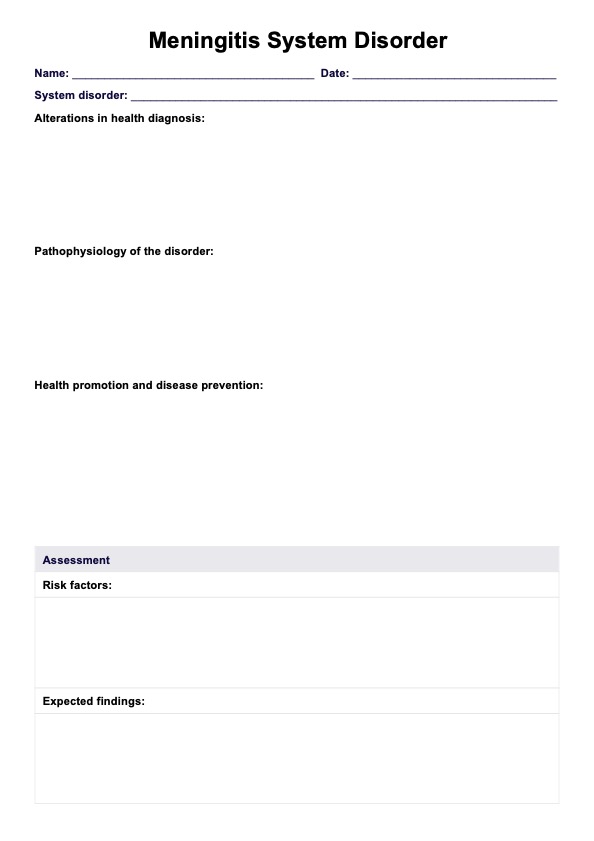The four primary clinical manifestations of meningitis include fever, neck stiffness, altered mental status, and severe headache. These symptoms may appear suddenly and are often accompanied by nausea, vomiting, or sensitivity to light.

Meningitis System Disorder
Download Carepatron's free Meningitis System Disorder Template PDF and example for a structured approach in clinical learning and assessment.
Meningitis System Disorder Template
Commonly asked questions
The protocol for meningitis includes immediate hospitalization, administration of intravenous antibiotics for bacterial meningitis, and supportive care. Additional steps involve conducting diagnostic tests like lumbar punctures to confirm the infection and determine the appropriate treatment.
Behavioral problems associated with meningitis can include irritability, difficulty concentrating, and mood swings, often resulting from neurological impacts or post-infection complications. In severe cases, these issues may persist long-term, affecting social interactions and daily functioning.
EHR and practice management software
Get started for free
*No credit card required
Free
$0/usd
Unlimited clients
Telehealth
1GB of storage
Client portal text
Automated billing and online payments











